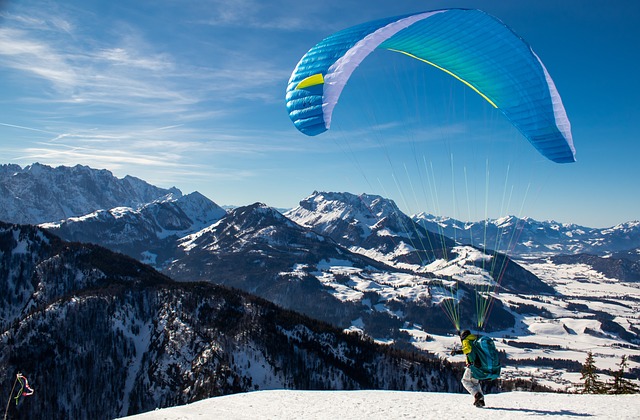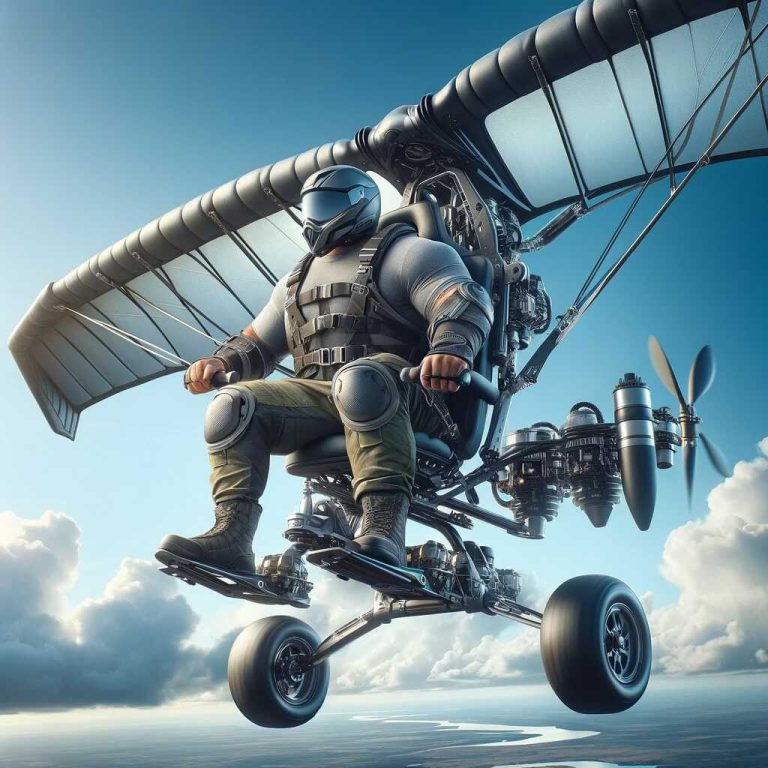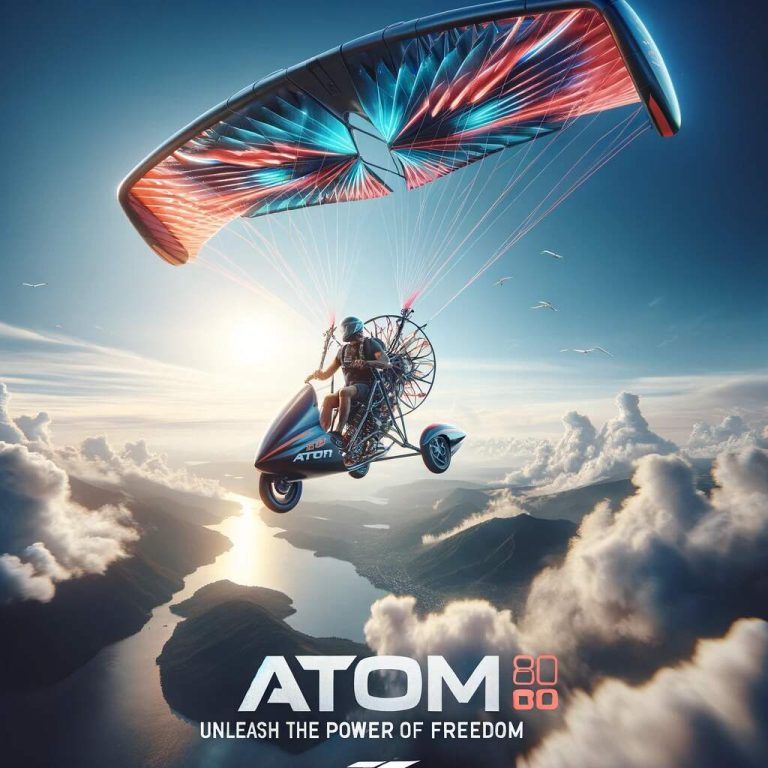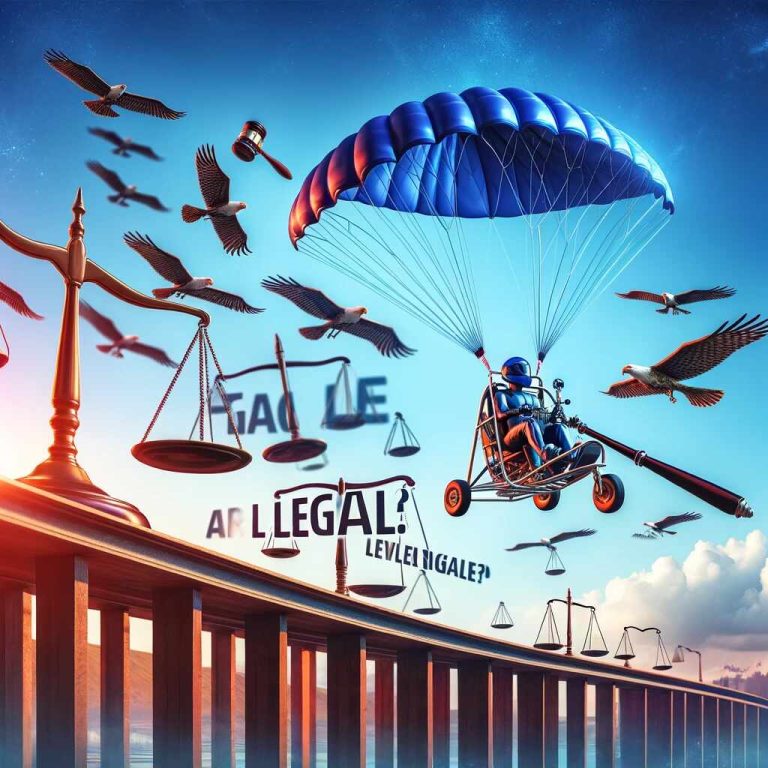Paragliding is an exciting and popular adventure sport that has captured the imaginations of thrill-seekers and nature enthusiasts alike. The sensation of soaring through the air, with the wind as your guide, can be an exhilarating experience. However, there are different types of paragliding, and understanding the distinctions between them is important for anyone interested in taking to the skies. One of the most common questions asked by those new to the sport is, “Do paragliders have engines?”
Traditional paragliders do not have engines; they rely on natural forces like lift and thermals to stay airborne and maneuver. However, powered paragliders do have engines, which provide additional thrust for takeoff, maintaining altitude, and extending flight duration. Powered paragliding, also known as paramotoring or PPG, is a variation of the sport that combines the basic elements of paragliding with an engine for enhanced control and flexibility during flight.
In this comprehensive guide, I will delve into the world of paragliding and powered paragliding, exploring their similarities, differences, and ultimately answering the question of whether or not paragliders have engines in detail.
Understanding Paragliding
Paragliding is a recreational and competitive adventure sport that involves flying lightweight, free-flying, foot-launched glider aircraft known as paragliders. It provides pilots with the opportunity to experience unpowered flight, relying on the natural forces of lift and thermals to stay aloft and maneuver through the air.
Key components of a paraglider
A paraglider consists of two main components: the wing (also known as the canopy) and the harness. The wing is made from a high-performance fabric, and its shape is maintained by the pressure of air entering vents in the front. Suspension lines connect the wing to the harness, where the pilot is seated. The pilot steers the paraglider by shifting body weight and manipulating the brake lines that connect to the trailing edge of the wing.
The process of launching and flying a paraglider
Launching a paraglider typically requires the pilot to run or walk down a slope, facing into the wind, while holding onto the risers (the lines connecting the harness to the wing). As the wing inflates with air and begins to lift, the pilot’s feet leave the ground, and they enter into a smooth glide.
To maintain and gain altitude, pilots search for thermals, which are columns of rising warm air. They use their skills to navigate and maneuver the paraglider, turning in circles to remain within the thermal and ascend higher. Once at a desired altitude, the pilot can glide for long distances, exploring the landscape from a bird’s-eye view. To land, the pilot gradually descends by releasing altitude in a controlled manner and flaring the wing just before touching down, ensuring a soft landing.
Powered Paragliding: Paragliders with Engines
Powered paragliding, also known as paramotoring or PPG, is a form of ultralight aviation that combines paragliding with a small engine, providing pilots with additional power and control during their flights. This enables them to take off and land more easily, fly longer distances, and have a greater degree of independence from the natural forces that traditional paragliders rely on.
The role of engines in powered paragliding
In powered paragliding, the engine is used to generate thrust, propelling the pilot forward and providing additional lift during takeoff, flight, and landing. The engine is typically a two-stroke or four-stroke internal combustion engine, although electric motors are also becoming more common. The motor is mounted on a backpack-style frame, which the pilot wears on their back, and it’s connected to a propeller enclosed within a protective cage.
Key components of a powered paraglider
A powered paraglider comprises three main components: the wing, the harness, and the motor. The wing and harness are similar to those used in traditional paragliding, but the motor and its frame differentiate powered paragliders. The motor provides the thrust necessary for takeoff and sustained flight, and it can be turned off mid-flight to transition into a purely gliding mode if desired.
The process of launching and flying a powered paraglider
Launching a powered paraglider involves similar steps to traditional paragliding, with the pilot running or walking forward while holding the risers and inflating the wing. However, the engine’s thrust assists in the takeoff process, reducing the need for a slope or strong wind. Once airborne, the pilot uses the throttle to control the motor’s power, adjusting altitude and airspeed as desired.
During flight, powered paraglider pilots have the option to turn off the engine and glide, or to use the motor to maintain or gain altitude, explore different areas, and extend the flight duration. Landing a powered paraglider is similar to landing a traditional paraglider, with the pilot reducing power and flaring the wing just before touchdown for a smooth landing.
Comparing Paragliding and Powered Paragliding
Similarities between paragliding and powered paragliding
- Both paragliding and powered paragliding involve flying lightweight, foot-launched glider aircraft.
- The wing and harness components are similar for both types of paragliding.
- Pilots in both sports use body weight and brake lines to steer and maneuver the paraglider.
- Both forms of paragliding require proper training, skill development, and adherence to safety protocols.
Differences between paragliding and powered paragliding
- Engine presence and functionality
- Traditional paragliders rely solely on natural forces like lift and thermals, while powered paragliders use engines to generate thrust and maintain altitude.
- Launching techniques
- Paragliding usually requires a slope and specific wind conditions to launch, whereas powered paragliding can be launched from flat ground, with the assistance of the engine.
- Flight duration and distance
- Powered paragliders can cover greater distances and have longer flight durations due to the added thrust provided by the engine.
- Skill level and training requirements
- Powered paragliding may require additional training to learn engine management and maintenance, as well as understanding the specific nuances of launching and flying with an engine.
In summary, while paragliding and powered paragliding share many similarities, the presence and use of an engine in powered paragliding sets it apart from traditional paragliding. Powered paragliders offer pilots the ability to launch from flat ground, enjoy extended flight durations, and have greater control over altitude and flight direction.
The Benefits of Powered Paragliding
Improved control and maneuverability
- Powered paragliding provides pilots with enhanced control over their flight, allowing them to easily maintain or change altitude, adjust airspeed, and navigate through different terrains. This increased control can make powered paragliding more accessible for beginners and more enjoyable for experienced pilots.
Extended flight duration and range
- The addition of an engine in powered paragliding enables pilots to fly for longer periods and cover greater distances. This allows them to explore more of the landscape, reach remote locations, and enjoy extended periods of time in the air without being solely reliant on thermals or favorable wind conditions.
Access to diverse flying locations
- Powered paragliders are not dependent on slopes or specific wind conditions for launching, making it possible to take off from flat ground and in a wider range of environments. This flexibility opens up a greater variety of flying locations, allowing pilots to experience unique landscapes and adapt their flying to different conditions.
The potential for paragliding in various weather conditions
- While both traditional paragliding and powered paragliding are weather-dependent sports, powered paragliders can take advantage of their engines to navigate in a wider range of wind conditions. This can make it easier to find suitable flying opportunities, especially in areas with unpredictable or less-than-ideal weather patterns.
Overall, powered paragliding offers numerous benefits, including improved control, extended flight duration, access to diverse flying locations, and the ability to fly in a wider range of weather conditions. These advantages make powered paragliding an appealing option for both newcomers and experienced pilots looking to expand their horizons in the sport.
Safety Considerations for Powered Paragliding
Importance of proper training and certification
- Just like traditional paragliding, powered paragliding requires thorough training and, in some countries, certification to ensure pilots have the necessary skills and knowledge to fly safely. Prospective pilots should invest in professional instruction from certified trainers and follow a structured training program to develop their abilities and understanding of the sport.
Maintenance of equipment and engine
- Regular maintenance of the paraglider, harness, and especially the engine is crucial to ensure safe and reliable operation. Pilots should inspect their equipment before each flight, checking for any signs of wear or damage, and perform routine maintenance on their engine according to the manufacturer’s recommendations. Proper care and maintenance can help prevent equipment failure and accidents.
Weather and environmental factors
- Although powered paragliders can operate in a wider range of wind conditions than traditional paragliders, it’s still important to be aware of weather and environmental factors that can impact flight safety. Pilots should monitor weather forecasts, avoid flying in extreme or turbulent conditions, and be prepared to adjust their plans if necessary. Additionally, pilots should be mindful of local airspace restrictions, wildlife, and other environmental considerations.
General safety tips for powered paragliding
- Always wear appropriate safety gear, including a helmet, gloves, and eye protection.
- Ensure that the propeller and engine are properly secured and functioning before takeoff.
- Practice good judgment and decision-making, knowing when to abort a launch or land early if conditions are not ideal.
- Maintain situational awareness during flight, being conscious of other pilots, obstacles, and changing conditions.
- Develop and follow a pre-flight checklist to ensure all safety checks are completed before each flight.
Conclusion
In conclusion, paragliding and powered paragliding are two distinct forms of the same thrilling adventure sport, with the main difference being the presence of an engine in powered paragliding. This added power source provides pilots with a range of benefits, including improved control, extended flight duration, access to diverse flying locations, and the ability to fly in a wider range of weather conditions.
To answer the initial question, “Do paragliders have engines?”: traditional paragliders do not have engines, while powered paragliders do. Both forms of the sport require proper training, skill development, and safety precautions to ensure an enjoyable and secure flying experience.
Whether you are a beginner looking to learn the sport or an experienced paraglider seeking new adventures, powered paragliding offers unique opportunities to explore the skies and experience the exhilaration of flight. So, take to the air and discover the world of powered paragliding – a world where the sky truly is the limit.
If you decide to into paramotor here are the best paramotor for beginners.








